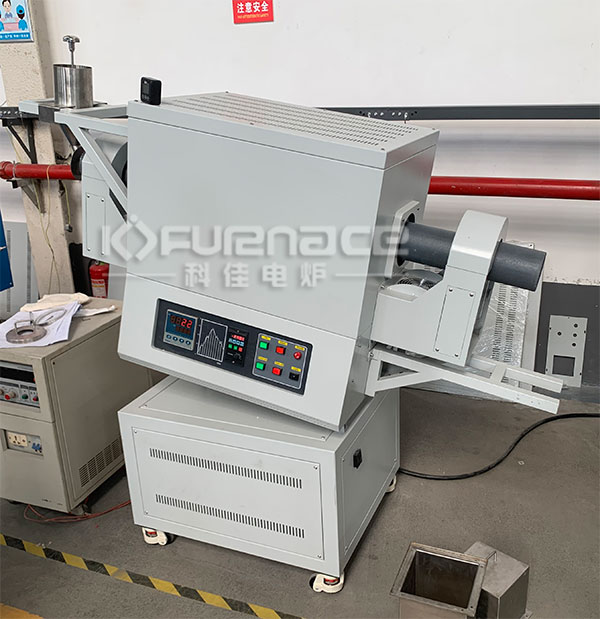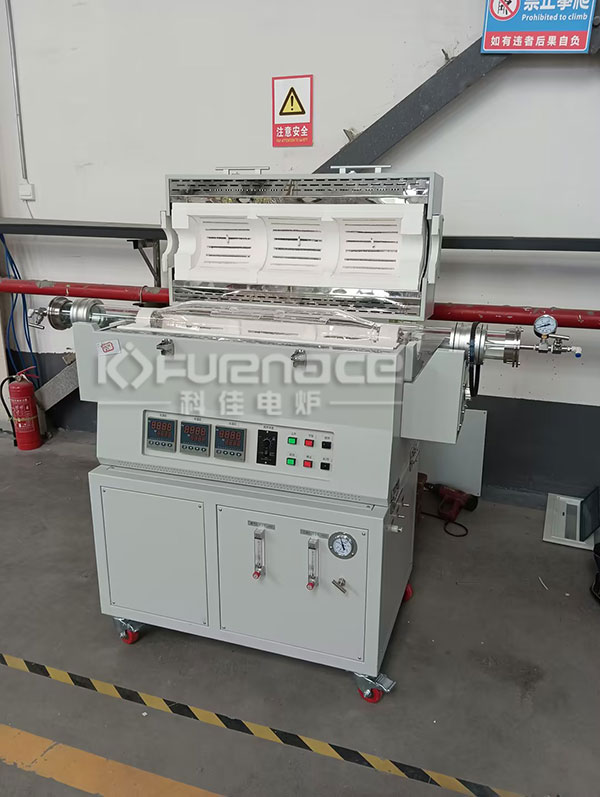As a commonly used custom tube furnace in university laboratories and industrial and mining enterprise laboratories, the customized experimental rotary tube furnace is loved for its numerous advantages. Let’s take a detailed look at this heat treatment equipment below!

Small tube rotary kiln (click on the image to view product details)
1. Core advantages
Uniform heating and dynamic processing
The furnace body can be tilted, and the furnace tube can rotate 360 °. The material is heated during dynamic rolling, avoiding local overheating or overburning. It is very suitable for processes such as powder metallurgy and ore roasting that require uniform reaction.
High precision temperature control and atmosphere control
Equipped with an intelligent PID temperature control system, the temperature control accuracy reaches ± 1 ℃, supporting 50 stages of programmed temperature rise, meeting complex experimental requirements such as semiconductor doping and ceramic sintering.
Customizable vacuum environment (up to 10 ⁻⁵ Pa) or inert/reducing gases (such as nitrogen and hydrogen) can be introduced to prevent material oxidation, suitable for scenarios such as nanomaterials and metal heat treatment.
Modularization and flexible customization
Size adaptation: Customize the length and diameter of the furnace tube according to the sample size (such as optional from 50mm to 300mm).
Material selection: The furnace tube can be made of quartz glass (good transparency, suitable for optical monitoring), stainless steel tube (corrosion-resistant), or corundum tube (high temperature resistant).
Function extension: Gas flow meters, pressure sensors, automatic feeding systems, etc. can be added to enhance the level of experimental automation.
Safety and durability
The double-layer carbon steel furnace body structure, combined with vacuum formed alumina insulation layer, has low heat storage and fast heating (up to 15 ℃/min), while reducing the outer wall temperature to ensure operational safety.
Integrated module control with functions such as over temperature protection and leakage protection, extending equipment lifespan.
2. Customization process and key parameters
Requirement confirmation stage
Core parameters: Clearly define the maximum temperature (such as 1200 ℃/1600 ℃), heating rate, sample size and shape, and atmosphere type (vacuum/inert/reducing).
Process requirements: Do you need functions such as segmented temperature control, rapid cooling, and automatic discharge. For example, sintering of lithium battery materials requires precise control of atmosphere flow, while powder metallurgy requires dynamic rolling to promote reactions.
Design and Manufacturing Stage
Structural customization: Choose vertical/horizontal design according to the laboratory space, optimize the furnace body tilt angle (such as 5 ° -45 ° adjustable) to adapt to different material flowability.
Sealing enhancement: Using 304 stainless steel flange and silicone sealing ring to ensure stable pressure inside the furnace (such as ± 0.5kPa) and prevent gas leakage.
Delivery and acceptance stage
Functional testing: During acceptance, temperature uniformity (such as multi-point temperature measurement through thermocouples) and atmosphere control accuracy (such as oxygen content ≤ 10ppm) need to be checked.
Training support: Suppliers should provide operational training, including program settings, emergency shutdown procedures, etc., to lower the threshold for use.
3. Typical application scenarios
Material synthesis: Synthesize nanomaterials under an inert atmosphere, and use a rotating design to promote uniform mixing of reactants and improve product purity.
Heat treatment experiment: Vacuum annealing of metal alloys to eliminate internal stress and improve material mechanical properties.
Catalytic research: Testing catalyst activity in a flowing atmosphere and simulating actual reaction conditions through rotating furnace tubes to improve data reliability.
4. Supplier selection suggestions
Technical strength: Priority should be given to manufacturers with non-standard customization experience, and their past cases should be checked to see if they cover similar needs.
Service guarantee: Confirm the warranty scope (such as free one-year warranty for electric furnaces) and response speed (such as on-site repair within 48 hours).
Cost optimization: When comparing quotes from different manufacturers, it is necessary to clarify whether the price includes transportation, installation, and training costs to avoid hidden costs.

Customized Big Belly Tube Experimental Rotary Tube Furnace (Click on the picture to view product details)
Overall, customized experimental rotary tube furnaces have numerous advantages and features. Before choosing, it is necessary to communicate the parameters with relevant technical personnel in order to customize a rotary tube furnace that is more suitable for one’s own experiment!Click to learn more Customized tube furnaces! Or click on online customer service to learn more about product information!